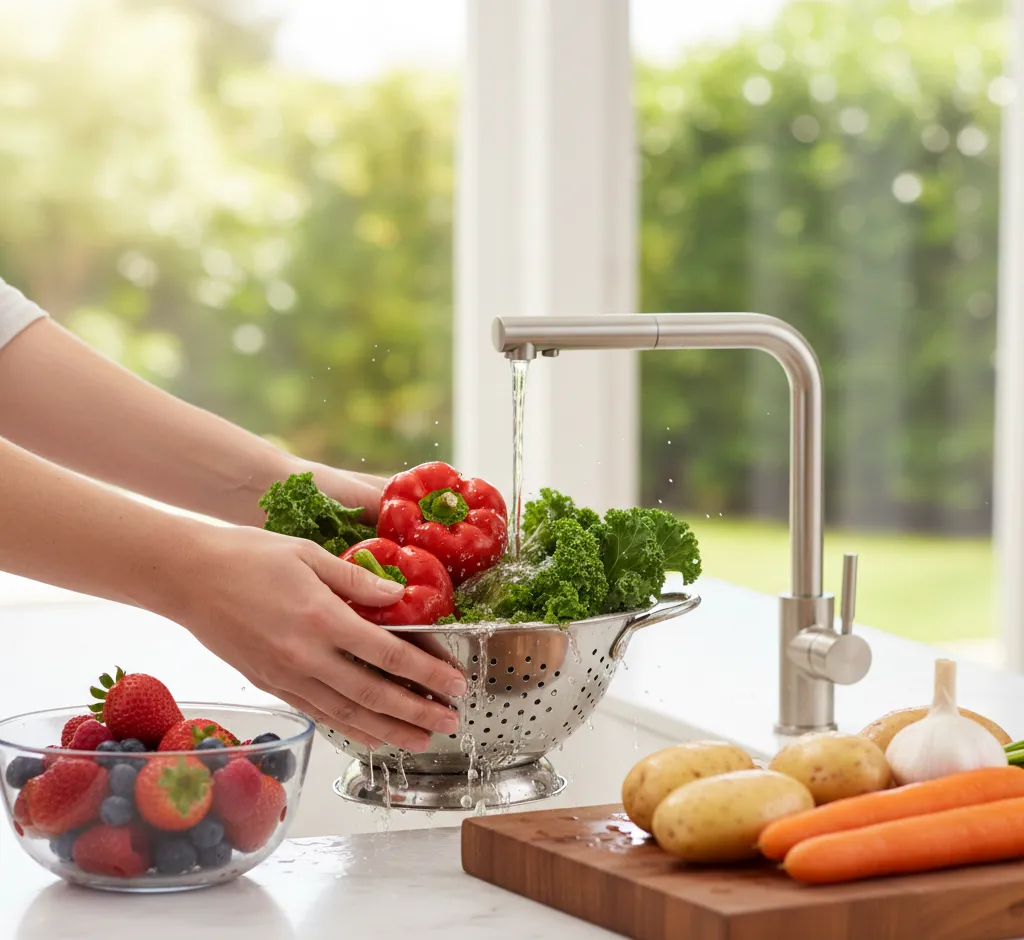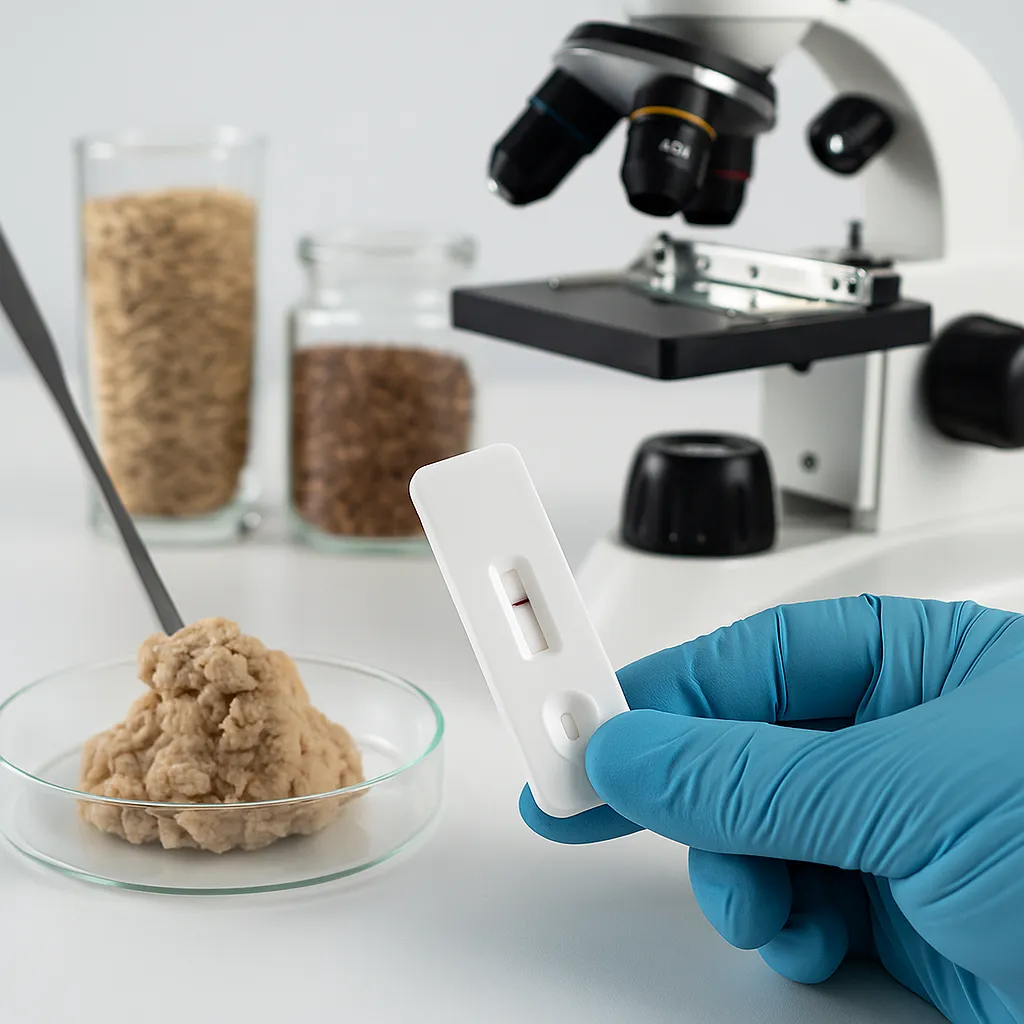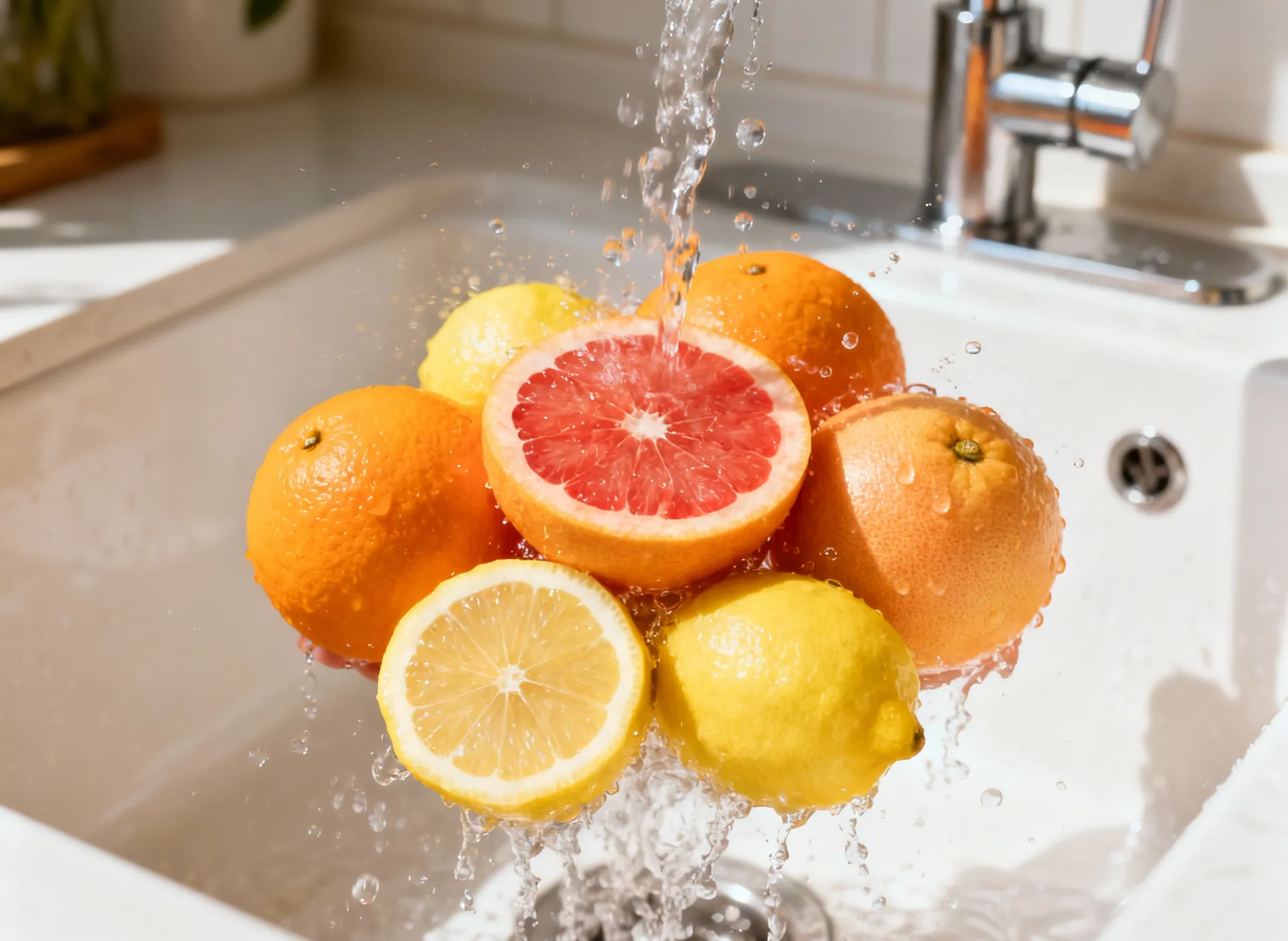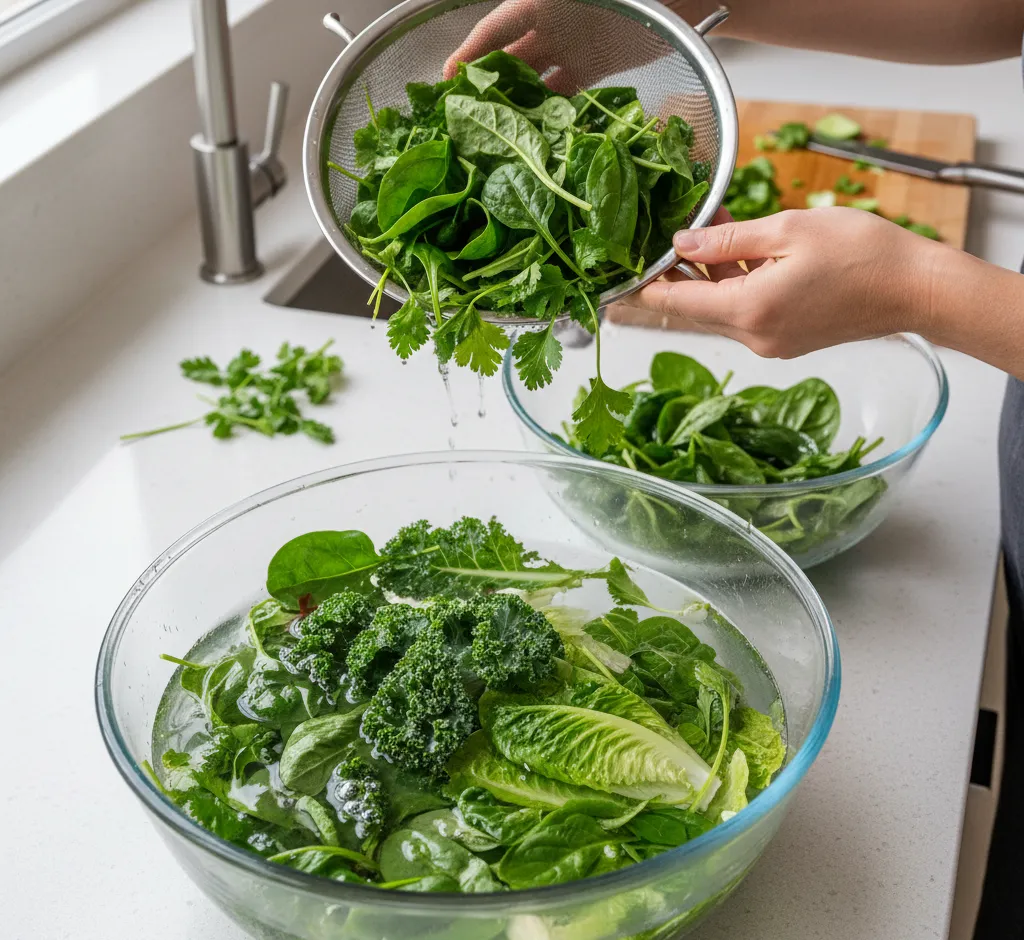The Essential Guide: Why Thoroughly Rinsing Your Vegetables is Non-Negotiable for Health and Safety
Discover why thoroughly rinsing your vegetables is crucial for removing dangerous pathogens, pesticide residue, and dirt. Learn proper washing techniques for different produce types and essential food safety tips.

In the quest for a healthy diet, fresh vegetables are indispensable. They are powerhouses of vitamins, minerals, and fiber, contributing significantly to well-being and disease prevention. However, the journey from farm to fork involves numerous steps, each posing potential contamination risks. This is why the simple act of **thoroughly rinsing your vegetables** before consumption is not just a suggestion—it's a critical, non-negotiable step in food safety and preparation.
Often overlooked or rushed, proper vegetable washing is your primary defense against a host of unseen dangers, ranging from microscopic pathogens to residual chemicals. Understanding the 'why' behind this essential kitchen chore is key to consistently practicing safe food handling habits. Let's delve deep into the multi-faceted reasons why giving your produce a rigorous wash is paramount for you and your family's health.
🌍 Understanding the Contamination Journey: From Field to Plate
To appreciate the necessity of rinsing, one must first understand the sources of contamination. Fresh produce encounters various risks throughout its life cycle:
1. Pathogenic Microorganisms
The most pressing danger comes from harmful bacteria, viruses, and parasites. These can cause foodborne illnesses, which range from mild discomfort to severe, life-threatening conditions. The common culprits include:
- Salmonella and E. coli: Often associated with animal manure used as fertilizer, contaminated irrigation water, or poor handling practices. Even a tiny amount can cause significant illness.
- Norovirus: A highly contagious virus that can be transferred to produce by infected workers during harvesting or processing.
- Listeria monocytogenes: Unique in its ability to grow even at refrigeration temperatures, it can contaminate produce at packing houses or during storage.
- Parasites (e.g., Toxoplasma gondii, Cyclospora): These are hardy and can adhere strongly to the surface of vegetables, particularly leafy greens.
These pathogens can reside in the soil, on the surface of the vegetable, or even in the crevices of irregular-shaped produce like broccoli or cauliflower. Rinsing significantly reduces the count of these microorganisms, minimizing the risk of infection.
2. Pesticide and Herbicide Residue
Conventional farming relies heavily on synthetic chemicals—pesticides to control insects and herbicides to manage weeds. While regulatory bodies set tolerance limits for these residues, consistent, long-term exposure, even at low levels, is a significant public health concern. Furthermore, washing is crucial for both conventionally grown and organic produce, as organic pesticides are also used and need to be removed.
The Role of Rinsing: Water helps physically detach and dissolve surface residues. For non-waxy produce, a simple, thorough water rinse is remarkably effective at reducing the presence of many common pesticides, offering a safer eating experience.
3. Soil, Dirt, and Debris
Vegetables grow in the soil, and while this is natural, the soil carries its own set of contaminants. Clinging dirt is not just aesthetically unappealing; it can harbor bacteria, tiny insects, and mold spores. Root vegetables and leafy greens, in particular, can retain a considerable amount of soil which needs vigorous removal.
4. Post-Harvest Handling Contaminants
After harvest, produce passes through many hands and surfaces: field workers, packing lines, transportation trucks, distribution centers, and grocery store shelves. Each touchpoint is an opportunity for contamination:
- Handling: Transfer of bacteria from unwashed hands or gloves.
- Equipment: Contamination from dirty processing machinery or storage containers.
- Cross-Contamination: Produce coming into contact with raw meat, poultry, or seafood, especially during storage or transport at the retail level.
🧼 The Proper Technique: Rinsing Goes Beyond a Quick Splash
A momentary pass under the faucet is inadequate. Effective rinsing requires a methodical approach tailored to the type of produce you are cleaning. It's about providing enough friction and water contact to dislodge contaminants.
Detailed Washing Instructions for Different Produce Types:
Leafy Greens (Lettuce, Spinach, Kale):
- Separate: Pull leaves apart from the head or stem.
- Soak (Optional, but Recommended): Place leaves in a bowl of cool water for a few minutes. This allows sand and grit to sink to the bottom.
- Rinse and Agitate: Lift the leaves from the water (don't pour the water off, as the debris will pour back over the greens) and rinse them one by one or in small batches under cool, running tap water. Gently rub the leaves to dislodge any residual dirt.
- Dry: Use a clean salad spinner or pat dry with a clean cloth or paper towel. This is vital, as moisture encourages bacterial growth.
Firm Produce (Potatoes, Carrots, Cucumbers, Apples):
These vegetables and fruits have a firm skin or rind that allows for more vigorous cleaning.
- Use a Brush: Scrub the surfaces with a clean vegetable brush under cool, running water. This mechanical action is highly effective at removing waxy coatings and deeply embedded soil.
- Peel When Necessary: For items like carrots or potatoes, peeling after washing is a good extra step, but always wash first to prevent transferring contaminants from the surface to the edible part via the knife.
Soft Produce (Berries, Mushrooms, Grapes):
These require a gentler touch to avoid bruising and waterlogging.
- Gentle Shower: Place them in a colander and spray or rinse them gently with cool water just before eating. Do not soak berries, as they absorb water quickly and lose flavor and texture.
- Don't Wash Until Needed: Wash berries and mushrooms right before consumption. Washing and storing them wet significantly speeds up spoilage.
Cruciferous Vegetables (Broccoli, Cauliflower):
The florets of these vegetables are excellent hiding spots for insects, dirt, and chemical residues.
- Inversion Soak: Soak the head upside down in a bowl of salted water (about 1 teaspoon of salt per cup of water) for 5-10 minutes to encourage small insects to detach.
- Thorough Rinse: Follow with a thorough rinse under running water, ensuring the spray penetrates the dense florets.
❌ What NOT to Do: Debunking Common Washing Myths
While the goal is cleanliness, certain common practices are ineffective or, worse, detrimental to food safety:
1. Do Not Use Soap or Detergent
This is a major safety violation. Vegetables are porous and can absorb dish soap, leaving harmful residues that are not safe for ingestion and can cause digestive irritation. Stick to plain water or approved, dedicated produce washes.
2. The Vinegar 'Cure'
While a dilute vinegar solution (e.g., three parts water to one part vinegar) can help kill some bacteria, it is not a magic bullet and is less necessary than commonly believed. A simple, vigorous rinse with cold, running water is often just as effective and less likely to affect the taste or texture of your produce. If you do use vinegar, always follow up with a plain water rinse.
3. Skipping the Rinse on Pre-Washed Items
Bags labeled 'pre-washed' or 'triple-washed' are generally safe to eat directly from the bag. However, if the package is torn, or if you feel uneasy, you can rinse them again. More importantly, if you do rinse them, you must use clean hands and utensils, and avoid cross-contamination in your sink, which may be dirtier than the product itself.
4. Washing Too Far in Advance
Washing creates a moist environment that is ideal for the growth of any remaining bacteria. Only wash the amount of produce you plan to use immediately or in the very near future, and ensure it is properly dried if storing for a short time.
📈 The Health and Economic Benefits of Proper Rinsing
The benefits extend beyond immediate food safety. Proper rinsing contributes to overall health and also has a practical impact on your food budget:
- Minimized Gastrointestinal Distress: By eliminating soil and grit, you prevent unnecessary irritation and discomfort.
- Improved Flavor and Texture: Removing residual dirt, waxy coatings, and chemical residues allows the natural, fresh flavors of the vegetables to shine through.
- Reduced Risk of Spoilage: While washing too early can increase spoilage, a quick, proper rinse followed by thorough drying can sometimes help remove mold spores or bacteria on the surface that would otherwise accelerate decay in storage.
- Avoidance of Costly Illness: Preventing foodborne illness saves on doctor visits, medication costs, and lost work time—a significant economic benefit.
Conclusion: Make Rinsing Your Routine
Fresh vegetables are a vital component of a healthy lifestyle. Respecting the food you eat and the journey it took to reach your table includes taking responsibility for its final preparation. Thoroughly rinsing your vegetables is a simple, yet profoundly important, preventative measure. It is a cornerstone of safe, healthy, and enjoyable cooking. Make the commitment to always wash your produce properly—it's the easiest and most effective way to protect your health and ensure the freshest taste possible.
Don't let the simplicity of the task fool you; a few extra minutes under the tap can be the difference between a nourishing meal and a regrettable episode of foodborne illness. Your health is worth the effort.


